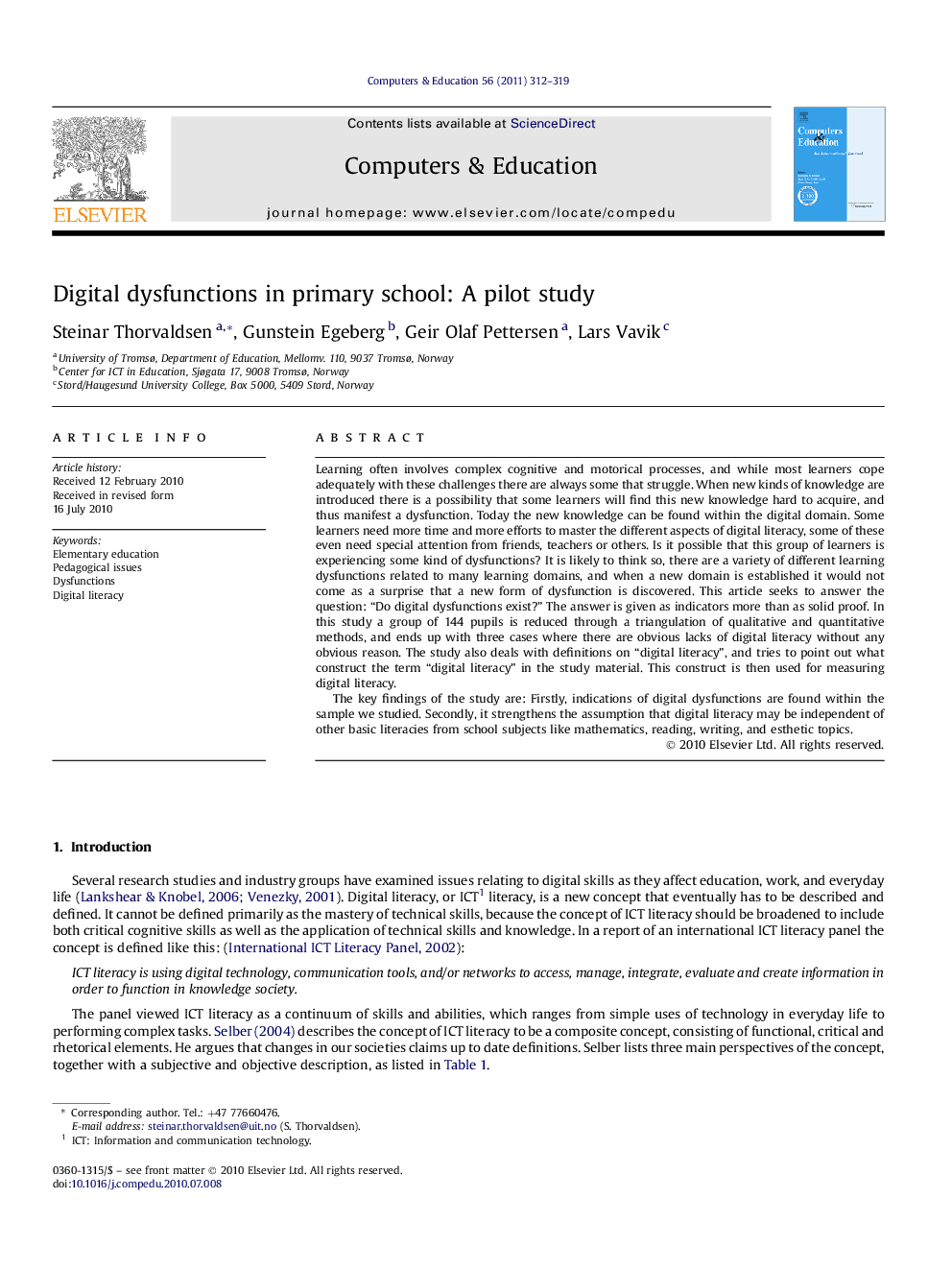| Article ID | Journal | Published Year | Pages | File Type |
|---|---|---|---|---|
| 348909 | Computers & Education | 2011 | 8 Pages |
Learning often involves complex cognitive and motorical processes, and while most learners cope adequately with these challenges there are always some that struggle. When new kinds of knowledge are introduced there is a possibility that some learners will find this new knowledge hard to acquire, and thus manifest a dysfunction. Today the new knowledge can be found within the digital domain. Some learners need more time and more efforts to master the different aspects of digital literacy, some of these even need special attention from friends, teachers or others. Is it possible that this group of learners is experiencing some kind of dysfunctions? It is likely to think so, there are a variety of different learning dysfunctions related to many learning domains, and when a new domain is established it would not come as a surprise that a new form of dysfunction is discovered. This article seeks to answer the question: “Do digital dysfunctions exist?” The answer is given as indicators more than as solid proof. In this study a group of 144 pupils is reduced through a triangulation of qualitative and quantitative methods, and ends up with three cases where there are obvious lacks of digital literacy without any obvious reason. The study also deals with definitions on “digital literacy”, and tries to point out what construct the term “digital literacy” in the study material. This construct is then used for measuring digital literacy.The key findings of the study are: Firstly, indications of digital dysfunctions are found within the sample we studied. Secondly, it strengthens the assumption that digital literacy may be independent of other basic literacies from school subjects like mathematics, reading, writing, and esthetic topics.
Research highlights► There are a variety of different learning dysfunctions and this study seeks to answer the question: “Do digital dysfunctions exist?” ► Results derived in the study demonstrate that analysis of questionnaires may contribute to our understanding of digital dysfunctions, and that it is possible to measure digital literacy and dysfunctions with reasonable levels of construct validity and reliability. ► Indications of digital dysfunctions were found within the sample (N=144) as students with: Low digital literacy, Positive attitudes towards computers (no PC-anxiety), sufficient training and exposure to computers, normal cognitive skills and no (other) specific learning difficulty. ► The study strengthens the evidence that digital literacy may be independent of other basic literacies from classical school subjects like mathematics, reading, writing, and esthetic topics. ► Educational professionals should be aware of a possible emerging new problem of digital dysfunctions.
